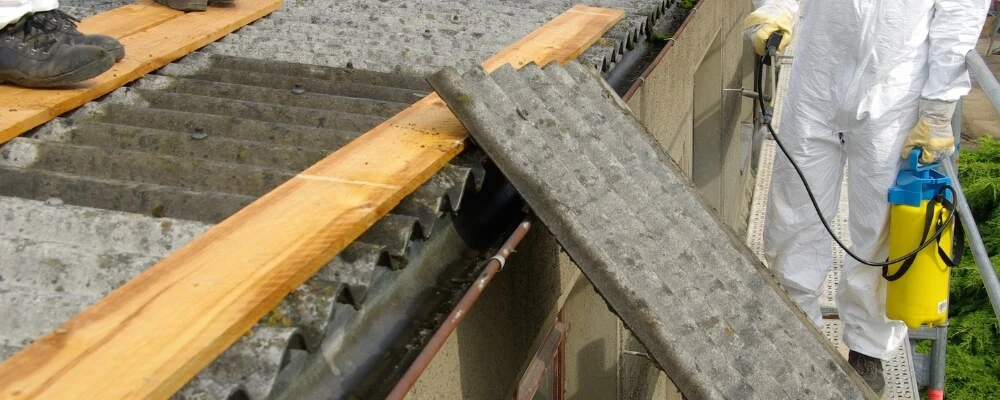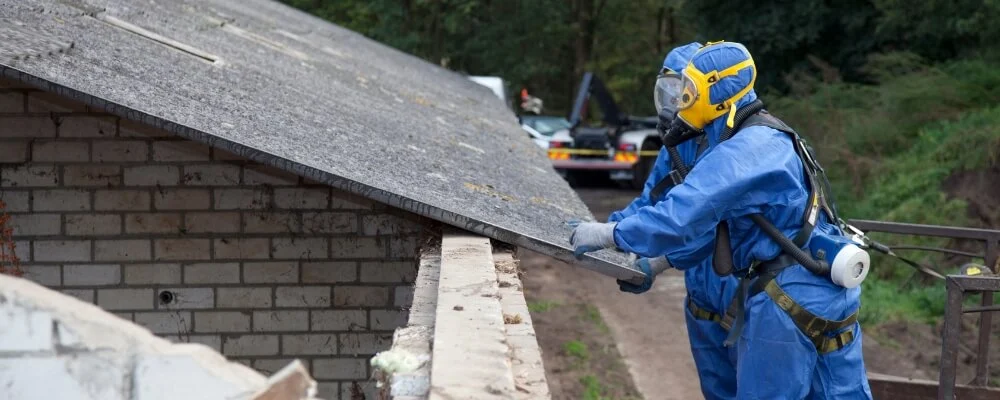Asbestos, a naturally occurring mineral, has been both a boon and a bane for humanity. Celebrated for its impressive properties, including fire resistance, durability, and insulating capabilities, it found its way into numerous products and industries. Yet, its darker side emerged when the severe health risks associated with its exposure came to light.
In this blog post, we delve deep into the question: “Why is Asbestos Bad?” and explore the myriad applications of this mineral in the section “What is Asbestos Used For?” By tracing the journey of asbestos from its widespread acceptance to its eventual condemnation, we aim to provide a comprehensive overview of its complex legacy. Join us as we unravel the intertwined narrative of asbestos’s benefits, its perils, and its indelible mark on modern history.
Why is Asbestos Bad?
Asbestos is harmful primarily due to its physical and chemical properties. Here’s a summary of why asbestos is bad:
1. Inhalation of Fibers
Asbestos is made up of tiny fibrous crystals, each composed of millions of microscopic “fibrils” that can be released into the atmosphere and inhaled into the lungs. These fibers are especially concerning because of their aerodynamic ability to remain airborne for extended periods and penetrate deep into the lungs.
Due to their size and shape, once they settle in the lung tissues, they can become trapped permanently. Over time, accumulated fibers can cause inflammation scarring and lead to the development of various health complications.

2. Development of Asbestos-Related Diseases
One of the most alarming aspects of asbestos exposure is its potential to cause a variety of diseases, many of which can be fatal. The damage these fibers inflict on the body’s internal structures can take years or even decades to manifest into discernible health issues.
- Mesothelioma is a particularly aggressive form of cancer that predominantly affects the lining of the lungs and abdomen. Its connection to asbestos exposure is so strong that, in many cases, a diagnosis of mesothelioma is considered indicative of past asbestos exposure.
- Asbestos-related lung cancer shares many characteristics with lung cancer caused by other agents like tobacco smoking, but its origin is directly linked to the inhalation of asbestos fibers.
- Asbestosis is not a form of cancer but is still debilitating. It’s characterized by progressive scarring of the lung tissues, resulting in reduced lung function, chronic cough, and shortness of breath.
- In cases of pleural thickening, the lining of the lungs becomes thick and less flexible, making breathing more laborious.
3. Long Latency Period
A distinguishing and particularly challenging aspect of asbestos-related diseases is their latency period. Symptoms might not present themselves until decades after the initial exposure. This prolonged latency makes it difficult for affected individuals to recall or identify their exposure, complicating both diagnosis and attribution.
4. No Safe Level of Exposure
Health experts have consistently held that no amount of asbestos exposure is considered “safe.” Even brief or low-level exposures have been linked to the diseases mentioned above. This understanding underscores the importance of avoiding any exposure to the material.
5. Ubiquity in Older Buildings
For much of the 20th century, asbestos was hailed as a “miracle mineral” because of its heat resistance, strength, and insulating properties. It was widely used in numerous building materials, including insulation, roofing, and tiles.
As a result, many buildings and structures erected or renovated before the turn of the century potentially contain asbestos. If these materials are disturbed, for instance, during renovations, demolitions, or even routine maintenance, there’s a risk of releasing dangerous fibers into the air.
6. Difficulty in Detection
The difficulty in detecting its presence further exacerbates the inherent danger of asbestos. The fibers are minuscule, and once released, they can’t be identified through our senses – they don’t have a distinct smell or taste and are invisible to the naked eye. This invisibility poses a silent threat, as individuals might unknowingly inhale asbestos-contaminated air.
Only specialized equipment and trained professionals can reliably detect and measure asbestos concentrations in environments, emphasizing the importance of professional asbestos assessments in suspect areas.

What is Asbestos Used For
Asbestos is a group of naturally occurring silicate minerals that are characterized by their fibrous structure. These fibers are heat-resistant, chemically inert, and non-conductive and possess high tensile strength, making them highly valued in various applications for many decades. Here’s a detailed look at what asbestos was used for:
1. Building and Construction Materials
Asbestos became a staple in construction primarily because of its insulating capabilities and resistance to fire. Insulation in buildings often employs asbestos, especially within walls, attics, and encircling pipes and boilers, to retain heat and reduce the risk of fire.
Roofing and siding shingles were frequently made with asbestos due to its inherent strength and capacity to withstand fire. This ensured that buildings had an extra layer of protection against potential external fires or extreme weather conditions. In the domain of interior decor, ceiling and floor tiles often contained asbestos.
The mineral was mixed with vinyl for floor tiles, providing a durable and fire-resistant surface, while in ceilings, especially drop ceilings, it helped in fireproofing. Additionally, drywall and joint compounds were often mixed with asbestos. It was particularly beneficial for filling the seams between pieces of drywall, ensuring a smooth and fire-resistant surface.
2. Fireproofing and Heat Resistance
The unmatched heat resistance of asbestos made it invaluable for products and situations where high temperatures were involved. Large structures, especially skyscrapers, often had their steel frameworks coated in fire-resistant asbestos coatings. This provided a level of assurance against fires that could compromise the structural integrity of the building.
Occupations that frequently dealt with extreme heat, such as firefighters and foundry workers, often wore clothing made or lined with asbestos. This provided them protection from potential burns or heat damage.
In the realm of transportation, asbestos found its way into automobiles, especially within brake pads and linings. Its resistance to both heat and wear made it ideal for these parts that frequently dealt with friction and high temperatures.
3. Chemical Industry
Asbestos’s resistance to chemicals made it a sought-after material in the chemical sector. Acid-resistant gaskets, often used in environments with strong chemicals, contained asbestos to ensure they remained uncompromised. Another notable use within this industry was for filtering.
The unique fibrous structure of asbestos was ideal for filtering out impurities in certain chemical processes, ensuring the purity of the end product.

4. Electrical Insulation
Electricity and its associated risks were well managed with the help of asbestos. Its non-conductive nature made it ideal for insulating electrical wires and components. This usage not only mitigated the risk of electrical fires but also ensured that users were safeguarded against potential electrocution.
5. Shipbuilding
Ships, particularly their engines and boilers, generate immense heat. Asbestos, with its heat-resistant characteristics, was heavily used within ships. Boilers, steam pipes, and hot water pipes were often insulated with asbestos, ensuring both the safety of the ship and the comfort of those onboard.
6. Automotive Industry
The automotive industry’s reliance on asbestos extended beyond just brake pads. Clutch linings, gaskets, and even some transmission parts were manufactured using asbestos, ensuring these components were durable and could withstand the high-temperature environments they were exposed to.
7. Consumer Goods
Surprisingly, a variety of household items from the past century also utilized asbestos. Older models of hairdryers and even popcorn poppers, items that had to manage high heat, incorporated asbestos to ensure they operated safely and efficiently.
8. Cement and Concrete Products
The addition of asbestos to cement and concrete products wasn’t just about fire resistance. The mineral fibers added strength and durability to these materials, making them more robust and long-lasting.
9. Pipe Insulation
Homes and industrial setups often had pipes insulated with asbestos. This wasn’t just about retaining heat within the pipes but also about preventing condensation, which could lead to structural or equipment damage over time.
It’s crucial to note that while asbestos had many applications due to its beneficial properties, its severe health risks led many countries to limit or ban its use, especially from the late 20th century onwards. Today, many asbestos-containing materials remain in buildings, ships, and other structures and products, posing potential hazards when disturbed.
Conclusion
Asbestos stands as a testament to the intricacies of progress, illustrating how a material so lauded for its benefits can also harbour grave dangers. While its myriad uses across industries once heralded a new era of innovation and safety, the serious health implications of its exposure remind us of the need for vigilance and thorough research before widespread adoption of any material.
As we look back at the legacy of asbestos, it serves as a poignant lesson in the balance between harnessing nature’s gifts and ensuring the safety of humanity. As consumers, professionals, and global citizens, it’s imperative that we continually seek knowledge, prioritize health, and champion responsible innovation in all spheres of life.

